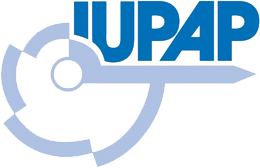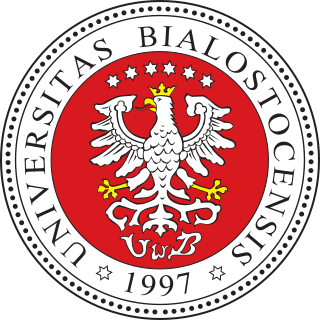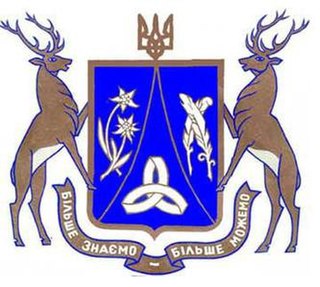
A physicist is a scientist who specializes in the field of physics, which encompasses the interactions of matter and energy at all length and time scales in the physical universe. Physicists generally are interested in the root or ultimate causes of phenomena, and usually frame their understanding in mathematical terms. They work across a wide range of research fields, spanning all length scales: from sub-atomic and particle physics, through biological physics, to cosmological length scales encompassing the universe as a whole. The field generally includes two types of physicists: experimental physicists who specialize in the observation of natural phenomena and the development and analysis of experiments, and theoretical physicists who specialize in mathematical modeling of physical systems to rationalize, explain and predict natural phenomena.

The International Union of Pure and Applied Physics is an international non-governmental organization whose mission is to assist in the worldwide development of physics, to foster international cooperation in physics, and to help in the application of physics toward solving problems of concern to humanity. It was established in 1922 and the first General Assembly was held in 1923 in Paris. The Union is domiciled in Geneva, Switzerland.

The University of Bialystok is the largest university in the north-eastern region of Poland, educating in various fields of study, including humanities, social and natural sciences and mathematics. It has nine faculties, including a foreign one in Vilnius. Four faculties have been awarded the highest scientific category “A”. The University of Bialystok has the right to confer doctoral degrees in ten fields, as well as postdoctoral degrees in law, economics, chemistry, biology, history and physics.

The Polish Academy of Arts and Sciences or Polish Academy of Learning, headquartered in Kraków and founded in 1872, is one of two institutions in contemporary Poland having the nature of an academy of sciences.

The Belarusian State University of Informatics and Radioelectronics, also known as BSUIR, is a public Higher Education Institution accredited by the Ministry of Education of the Republic of Belarus. Nowadays it is a large educational and scientific complex in Minsk, Belarus. BSUIR was founded on March 15, 1964, and plays a leading role in preparing its students in the fields of computer science, radioelectronics and telecommunications in Belarus.
The International Commission for Optics (ICO) was created in 1947 with the objective to contribute, on an international basis, to the progress and dissemination of the science of optics and photonics and their applications. It emphasises the unity of the crossdisciplinary field of optics.

Novosibirsk State University (NSU) is a public research university located in Novosibirsk, Russia. The university was founded in 1958, on the principles of integration of education and science, early involvement of students with research activities and the engagement of leading scientists in its teaching programmes.

The National Academy of Sciences of Ukraine is a self-governing state-funded organization in Ukraine that is the main center of development of science and technology by coordinating a system of research institutes in the country. It is the main research oriented organization along with the five other academies in Ukraine specialized in various scientific disciplines. NAS Ukraine consists of numerous departments, sections, research institutes, scientific centers and various other supporting scientific organizations.

The German Physical Society is the oldest organisation of physicists. As of 2022, the DPG's worldwide membership is cited as 52,220, making it one of the largest national physics societies in the world. The DPG's membership peaked in 2014 when it reached 63,000, but it has been decreasing since then. It holds an annual conference and multiple spring conferences, which are held at various locations and along topical subjects of given sections of the DPG. The DPG serves the fields of pure and applied physics and aims to foster connections among German physicists, as well as the exchange of ideas between its members and foreign colleagues. The bylaws of the DPG commit the organization and its members to maintain scientific integrity and ethics, including freedom, tolerance, truthfulness, and dignity in scientific work, as well as promoting gender equality in the fields of physics and related sciences.

The Academia Europaea is a pan-European Academy of Humanities, Letters, Law, and Sciences. The Academia was founded in 1988 as a functioning Europe-wide Academy that encompasses all fields of scholarly inquiry. It acts as co-ordinator of European interests in national research agencies.
Baku Slavic University (BSU) is a public university located in Baku, Azerbaijan.

Herman Feshbach was an American physicist. He was an Institute Professor Emeritus of physics at MIT. Feshbach is best known for Feshbach resonance and for writing, with Philip M. Morse, Methods of Theoretical Physics.

Odesa I. I. Mechnykov National University, often referred to as Odesa National University, located in Odesa, Ukraine, is one of the country's major universities, named after the scientist Élie Metchnikoff, a Nobel prizewinner in 1908. The university was founded in 1865 by an edict of Tsar Alexander II of Russia, which reorganized the Richelieu Lyceum of Odesa into the new Imperial Novorossiya University. In the Soviet era, the university was renamed Odesa I. I. Mechnykov State University.

Uzhhorod National University is a Ukrainian state higher educational institution in the city of Uzhhorod in Ukraine.

During the Cold War, the Iron Curtain was a political metaphor used to describe the political and later physical boundary dividing Europe into two separate areas from the end of World War II in 1945 until the end of the Cold War in 1991. The term symbolizes the efforts by the Soviet Union (USSR) to block itself and its satellite states from open contact with the West, its allies and neutral states. On the east side of the Iron Curtain were the countries that were connected to or influenced by the Soviet Union, while on the west side were the countries that were NATO members, or connected to or influenced by the United States; or nominally neutral. Separate international economic and military alliances were developed on each side of the Iron Curtain. In recent research (2024) by Rodolfo Campos, Benedikt Heid, and Jacopo Timini, the Iron Curtain at its economic peak in 1951 functioned as a tariff-equivalent barrier of approximately 48%, contributing to economic isolation and challenges for Soviet-aligned countries. It later became a term for the physical barriers of fences, walls, minefields, and watchtowers that were built up along some of its sections, with the Berlin Wall being the most significant of these.

The Lindau Nobel Laureate Meetings are annual scientific conferences held in Lindau, Bavaria, Germany, since 1951. Their aim is to bring together Nobel laureates and young scientists to foster scientific exchange between different generations, cultures and disciplines. The meetings assume a unique position amongst international scientific conferences, as from 30 to 65 Nobel laureates attending each edition they are the largest regular congregation of Nobel laureates in the world, apart from the Nobel Prize award ceremony in Stockholm.

The Global Energy Prize is an international award in the field of energy industry which is given for "outstanding scientific research and scientific-technical developments in the field of energy which promote greater efficiency and environmental security for energy sources on Earth in the interests of all mankind".
János Kertész is a Hungarian physicist known for his contributions to the fields of econophysics, complex networks, and the application of fractal geometry in physical problems. He has played a pioneering role in these areas, expanding the understanding and applications of statistical physics and complex systems.
European Network Remembrance and Solidarity (ENRS) was created in 2005 as a joint initiative by German, Hungarian, Polish, and Slovak ministers of culture. In 2014 Romania joined the structure.
The Société Française de Physique (SFP), or the French Physical Society, is the main professional society of French physicists. It was founded in 1873 by Joseph-Charles d'Almeida.














